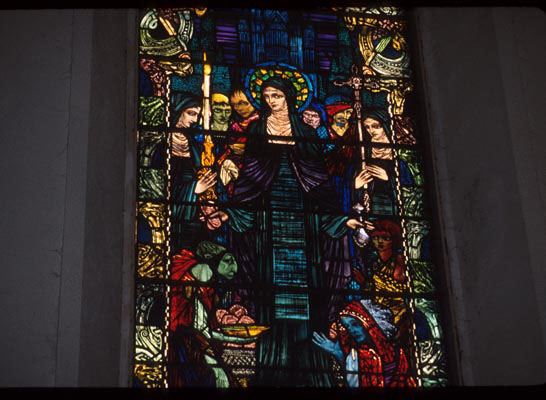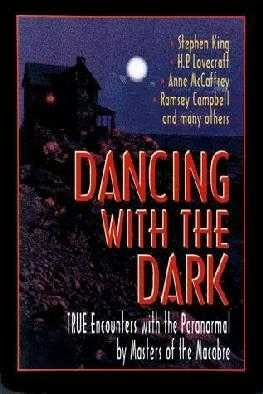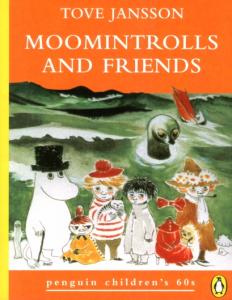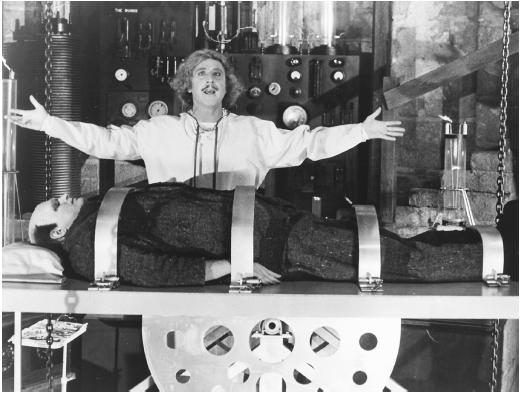
Ive been feeling dreadful for the past few days, the antibiotics are playing havoc with my system so Im getting some respite at the mo, I will drop by all the wonderful blogs I read soon.. Thanks
I too feel like Im on the wrong planet sometimes and wish like Bill Hicks that the aliens will abduct me an take me to their utopian world of Aucturas, However in between Ill have to make do with the rollarcoaster ride that is life here in Dublin.



 Originally from Matlock in the UK, his first novel was ‘Diana’s Story’ is an account of his wife’s long running battle with ME. Diana was reliant on Deric, for the majority of her needs, throughout her illness but she held on fiercely to her independence until the last. Ultimately and inevitably Diana dies, but the book is not about her death; rather, it’s a celebration of her life and the impact she had on those around her. It sounds like just another sad autobiography, but the truth is, it is so much more than that. This book is funny. Each catastrophe, and each new medical problem, some of which would have ordinary people in despair, is seen by the participants from the funny side and narrated as such by Deric. “I guess you had to have been there” moments abound through this book, but thanks to the narrative skills , the reader feels that they were indeed “there” and can picture the moment perfectly. Incidents such as Diana falling downstairs, whilst the house is empty and breaking her arm, yet lying there painting the woodwork while she waits for assistance has the reader simultaneously in tears and in laughter. Upon arrival at the hospital, a nurse enquires of Diana what happened this time, and to a packed waiting room she announces that he hit her again, because his egg wasn’t cooked correctly.
Originally from Matlock in the UK, his first novel was ‘Diana’s Story’ is an account of his wife’s long running battle with ME. Diana was reliant on Deric, for the majority of her needs, throughout her illness but she held on fiercely to her independence until the last. Ultimately and inevitably Diana dies, but the book is not about her death; rather, it’s a celebration of her life and the impact she had on those around her. It sounds like just another sad autobiography, but the truth is, it is so much more than that. This book is funny. Each catastrophe, and each new medical problem, some of which would have ordinary people in despair, is seen by the participants from the funny side and narrated as such by Deric. “I guess you had to have been there” moments abound through this book, but thanks to the narrative skills , the reader feels that they were indeed “there” and can picture the moment perfectly. Incidents such as Diana falling downstairs, whilst the house is empty and breaking her arm, yet lying there painting the woodwork while she waits for assistance has the reader simultaneously in tears and in laughter. Upon arrival at the hospital, a nurse enquires of Diana what happened this time, and to a packed waiting room she announces that he hit her again, because his egg wasn’t cooked correctly.



 The`Hugh Lane Municipal Gallery of Ireland was one such port of call on a 'tour'. I remember the topical exhibition for that particular day well as it was exhibiting toy designs through the ages (guaranteed to capture the attention of all 11 year olds). In one section of the building there was a 'dark room' , dark so much as it was black marble walls with sections cut out which illuminated the stained glass works of an artist called Harry Clarke. I was enchanted when I seen Keats' The eve of St Agnes' with its fairytale qualities, the lusciousness of color and incredible detail. I remember buying all the postcards available of his works in the museum shop afterwards. I was hooked. My teacher at the time gave me the address's of various churches and places where his works where in situ in Dublin. They became regular haunts of mine when I got older and more independent, appreciating it that little bit more of this Oh so impeccably rendered work.
The`Hugh Lane Municipal Gallery of Ireland was one such port of call on a 'tour'. I remember the topical exhibition for that particular day well as it was exhibiting toy designs through the ages (guaranteed to capture the attention of all 11 year olds). In one section of the building there was a 'dark room' , dark so much as it was black marble walls with sections cut out which illuminated the stained glass works of an artist called Harry Clarke. I was enchanted when I seen Keats' The eve of St Agnes' with its fairytale qualities, the lusciousness of color and incredible detail. I remember buying all the postcards available of his works in the museum shop afterwards. I was hooked. My teacher at the time gave me the address's of various churches and places where his works where in situ in Dublin. They became regular haunts of mine when I got older and more independent, appreciating it that little bit more of this Oh so impeccably rendered work.
 Born in Dublin to Joshua Clarke, a Stained glass manufacturer, Harry, when 16 completed his education in his main field, and travelled to London, where he sought employment as a book illustrator. Picked up by the famous London publisher George Harrap, divined his genius and hired him, on the spot, to provide illustrations for an edition of Andersen's Fairy Tales in both a trade and deluxe edition - almost unheard of for an untested, unknown and very young illustrator he started with two commissions which were never completed: Samuel Taylor Coleridge's The Rime of the Ancient Mariner (his work on which was destroyed during the 1916 Easter Uprising) and an illustrated edition of Alexander Pope's The Rape of the Lock.
Born in Dublin to Joshua Clarke, a Stained glass manufacturer, Harry, when 16 completed his education in his main field, and travelled to London, where he sought employment as a book illustrator. Picked up by the famous London publisher George Harrap, divined his genius and hired him, on the spot, to provide illustrations for an edition of Andersen's Fairy Tales in both a trade and deluxe edition - almost unheard of for an untested, unknown and very young illustrator he started with two commissions which were never completed: Samuel Taylor Coleridge's The Rime of the Ancient Mariner (his work on which was destroyed during the 1916 Easter Uprising) and an illustrated edition of Alexander Pope's The Rape of the Lock. Difficulties with these projects made Hans Christian Andersen's Andersen's Fairy Tales his first printed work , this was closely followed by an illustrations for an edition of Edgar Allan Poe's Tales of Mystery and Imagination. The latter of these made his reputation as a book illustrator . The last of these is perhaps his most famous work, and prefigures the disturbing imagery of 1960s psychedelia. It's very important to realize that Clarke wasn't just illustrating books. To only consider this aspect of his creativity is greatly misleading. Illustrations may have paid the early bills, but stained glass was his career.Unfortunately, ill health plagued both the Clarke brothers, and worn down by the pace of their work, and perhaps the toxic chemicals used in stained glass production, both died within a year of each other -- Harry second in early 1931, of tuberculosis while trying to recuperate in Geneva Switzerland. Harry gave me a deep appreciation for his profession and set a certain standard that not many can come close to. The Irish people should hang their heads in shame for not singing their sons praise to the world as in my opinion he belongs up there with Klimt, Mucha, Beardsley for international crittical acclaim. If you ever venture into this little corner of the world do yourselves a favour, visit the gallery and enter the realm of clarkes fantasia. You will not regret it.
Difficulties with these projects made Hans Christian Andersen's Andersen's Fairy Tales his first printed work , this was closely followed by an illustrations for an edition of Edgar Allan Poe's Tales of Mystery and Imagination. The latter of these made his reputation as a book illustrator . The last of these is perhaps his most famous work, and prefigures the disturbing imagery of 1960s psychedelia. It's very important to realize that Clarke wasn't just illustrating books. To only consider this aspect of his creativity is greatly misleading. Illustrations may have paid the early bills, but stained glass was his career.Unfortunately, ill health plagued both the Clarke brothers, and worn down by the pace of their work, and perhaps the toxic chemicals used in stained glass production, both died within a year of each other -- Harry second in early 1931, of tuberculosis while trying to recuperate in Geneva Switzerland. Harry gave me a deep appreciation for his profession and set a certain standard that not many can come close to. The Irish people should hang their heads in shame for not singing their sons praise to the world as in my opinion he belongs up there with Klimt, Mucha, Beardsley for international crittical acclaim. If you ever venture into this little corner of the world do yourselves a favour, visit the gallery and enter the realm of clarkes fantasia. You will not regret it.


 This is a book filled with true encounters of the paranormal kind. But the difference with this book is the experiences are those experienced by the most un-likely people, which you would expect to get frightened. People like the famous horror writer Stephen King whose novels have given many readers chills, the well known writer James Herbert and classic horror film actor Vincent Price to name but a few of the icons of the horror genre whose tales are retold in this fascinating novel of paranormal brushes with spectral visions, phantom footsteps, encounters with ouijia board, premonitions of disasters are just a few of the experiences that have changed the very lives of the people who make their living from the horror genre. It truly is a fascinating read when you 'hear' the voices of fear tell their own true accounts; its a bit of revenge for the reader in a way to be honest! I havent read this book for a few years but some of the stories did give me goosebumps (a very hard thing to do) The one that sticks out the most is Ramsey Campbell's "The Nearest to a Ghost." He goes to the cemetery to scatter his mother's ashes and feels a powerful sense of grief that isn't his own. The feeling vanishes after a moment, his own grief returning. Steven Jones I imagine had several good nights of exchanging stories and toasting absent friends with some of his contributors, what an enviable project to pursue!
This is a book filled with true encounters of the paranormal kind. But the difference with this book is the experiences are those experienced by the most un-likely people, which you would expect to get frightened. People like the famous horror writer Stephen King whose novels have given many readers chills, the well known writer James Herbert and classic horror film actor Vincent Price to name but a few of the icons of the horror genre whose tales are retold in this fascinating novel of paranormal brushes with spectral visions, phantom footsteps, encounters with ouijia board, premonitions of disasters are just a few of the experiences that have changed the very lives of the people who make their living from the horror genre. It truly is a fascinating read when you 'hear' the voices of fear tell their own true accounts; its a bit of revenge for the reader in a way to be honest! I havent read this book for a few years but some of the stories did give me goosebumps (a very hard thing to do) The one that sticks out the most is Ramsey Campbell's "The Nearest to a Ghost." He goes to the cemetery to scatter his mother's ashes and feels a powerful sense of grief that isn't his own. The feeling vanishes after a moment, his own grief returning. Steven Jones I imagine had several good nights of exchanging stories and toasting absent friends with some of his contributors, what an enviable project to pursue!

 I remember hearing that Poppy Z Brite was going to be giving a Q & A at Trinity College here in Dublin, at the time I was living in Dublin but also doing a comic strip for a ‘Goth Zine‘ in London. Stuart, the editor (who is now an editor for a very popular vamp/goth mag called ’bite this’) squeeled with delight when I mentioned this to him and told me to get down there for an exclusive interview.
I remember hearing that Poppy Z Brite was going to be giving a Q & A at Trinity College here in Dublin, at the time I was living in Dublin but also doing a comic strip for a ‘Goth Zine‘ in London. Stuart, the editor (who is now an editor for a very popular vamp/goth mag called ’bite this’) squeeled with delight when I mentioned this to him and told me to get down there for an exclusive interview.  The woman was pixie in size and features and resembled a 12 year old with her sparse make up and short tight hair. After the Q & A I did a short interview with her and she and another author travelling with her , Caitlin Kiernan asked me to bring them / direct them out of the massive grounds of the campus and back to her hotel which wasn’t too far away really. As we walked she asked about the history surrounding the college, irish landmarks and a few recommended places that I thought she may be interested in visiting. She was warm, open and generous as most writers are I suspect. And I left with an armful of signed copies of her books , photos and an exclusive interview. Not much more I could have asked for really.
The woman was pixie in size and features and resembled a 12 year old with her sparse make up and short tight hair. After the Q & A I did a short interview with her and she and another author travelling with her , Caitlin Kiernan asked me to bring them / direct them out of the massive grounds of the campus and back to her hotel which wasn’t too far away really. As we walked she asked about the history surrounding the college, irish landmarks and a few recommended places that I thought she may be interested in visiting. She was warm, open and generous as most writers are I suspect. And I left with an armful of signed copies of her books , photos and an exclusive interview. Not much more I could have asked for really.

 Last night when watching Channel 4 I chanced upon one of those 10 second quotes between programming that celebrities and actors make commenting about the art of film, movies and life in general. The pearl of wisdom came from Gene Wilder and I couldnt hear what he had said as I was deaf with shock to see how much this great man had aged, sunken in frame and generally looked a shadow of his former self and I learned he was hospitalized with non-Hodgkin's lymphoma in 1999 and made a full recovery in 2000. It sure has taken its toil on him along with old age.
Last night when watching Channel 4 I chanced upon one of those 10 second quotes between programming that celebrities and actors make commenting about the art of film, movies and life in general. The pearl of wisdom came from Gene Wilder and I couldnt hear what he had said as I was deaf with shock to see how much this great man had aged, sunken in frame and generally looked a shadow of his former self and I learned he was hospitalized with non-Hodgkin's lymphoma in 1999 and made a full recovery in 2000. It sure has taken its toil on him along with old age.
